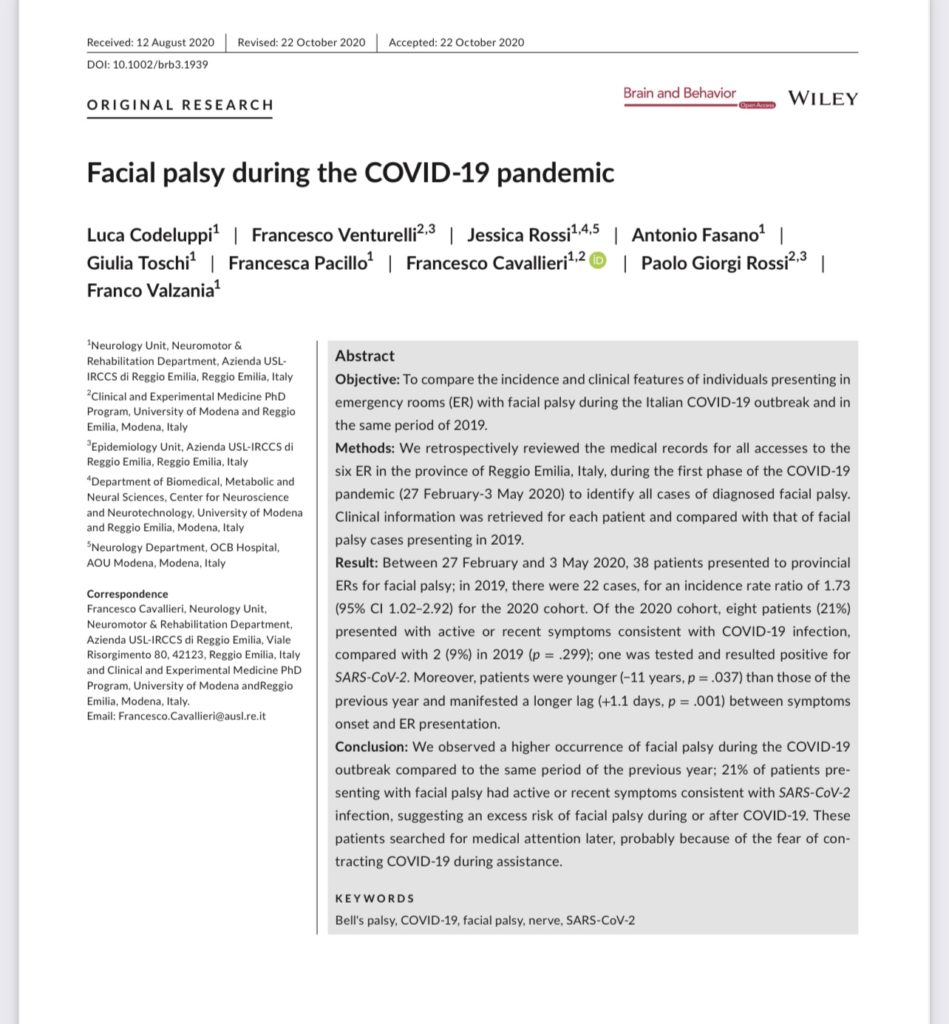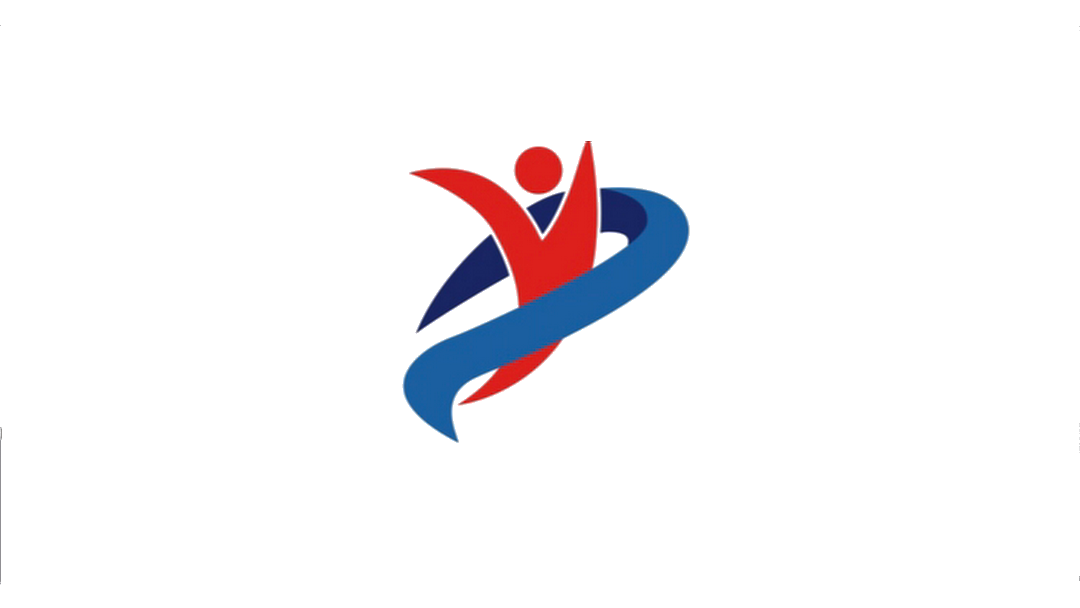
Codeluppi L, Venturelli F, Rossi J, Fasano A, Toschi G, Pacillo F, Cavallieri F, Giorgi Rossi P, Valzania F. Facial palsy during the COVID-19 pandemic. Brain Behav. 2021 Jan;11(1):e01939. doi: 10.1002/brb3.1939. Epub 2020 Nov 7. PMID: 33159420; PMCID: PMC7821573.
Idiopathic facial palsy (Bell’s palsy) is a common cranial mononeuropathy routinely seen in clinical practice whose cornerstone treatment is based mainly on a short course of oral corticosteroids and antiherpetic drugs. The cause of facial palsy is still unclear although a correlation with viral infection has been claimed. Moreover, the increased incidence of facial palsy observed during a vaccine trial has suggested that an immune‐mediated mechanism must be considered. SARS‐CoV‐2 damage is thought to be caused also by immunity activation, and coronaviruses are known to be neurotropic so there is the basis to consider a link between COVID‐19 and facial palsy.
The aim of the study was to analyze the variation in the incidence and clinical features of patients presenting with facial palsy during the early and lockdown phases of the COVID‐19 pandemic to determine whether there are any potential links between the two conditions.
The researcher retrospectively reviewed the electronic medical records for all accesses to local health authority from 27 February 2020, when the first confirmed COVID‐19 patient was registered, to 3 May, when lockdown ended, to identify all cases of idiopathic facial palsy.
Occurrences and characteristics of cases during this initial phase of the pandemic were compared with those of patients observed in the same period in the previous year (26 February – 3 May 2019, backdating the period by adding one day to compensate for the leap year in 2020). All patients diagnosed with facial palsy were identified, and the same basic features with the same criteria were collected; medical records for symptoms consistent with recent or active infection of any type at presentation were also searched. The resident population of the province of Reggio Emilia was used on 1 January 2019 and 1 January 2020 to calculate the incidence rate of facial palsy per 100,000 people during the period under study during the pandemic and in the same calendar period in 2019.
Thirty‐eight patients accessed the local emergency departments for facial palsy during the period in 2020 under study (incidence rate 7.1 cases per 100,000 inhabitants), while only 22 patients were found in the same calendar period of 2019 using the same medical information sources (incidence rate 4.1 cases per 100,000 inhabitants), resulting in a significantly higher incidence in 2020 compared to 2019.
A higher occurrence of facial palsy in the pandemic period compared to the same period of the previous year was observed. Moreover, about 21% of patients presenting to the emergency department for facial palsy during COVID‐19 outbreak had active or recent symptoms consistent with COVID‐19 infection. Although not definitive, these observations may support the association between acute mononeuropathies and COVID‐19. Patients affected by facial palsy during the COVID‐19 pandemic have found also to be younger, even if there is not enough elements so far to reasonably hypothesize the cause of this association.
The fear of contracting COVID‐19 may lead patients to forego or delay seeking medical attention. Supporting this hypothesis is the lag between disease onset and presentation in patients with facial palsy during the COVID‐19 outbreak. This has even more value when considering that facial palsy rarely goes unnoticed, patients usually are very alarmed by its symptoms and have little or no knowledge of the disease. Considering that patients’ fears during a pandemic may play a role in their delaying or even foregoing access to healthcare highlights the importance of information campaigns and territorial medical assistance.
In conclusion, there was a higher incidence of facial palsy during the COVID‐19 pandemic. Although not enough to establish a clear causative relationship between the two conditions, these data may suggest that COVID‐19 could hide even behind common clinical conditions like facial palsy suggesting physicians to keep the alert high during standard clinical practice.
